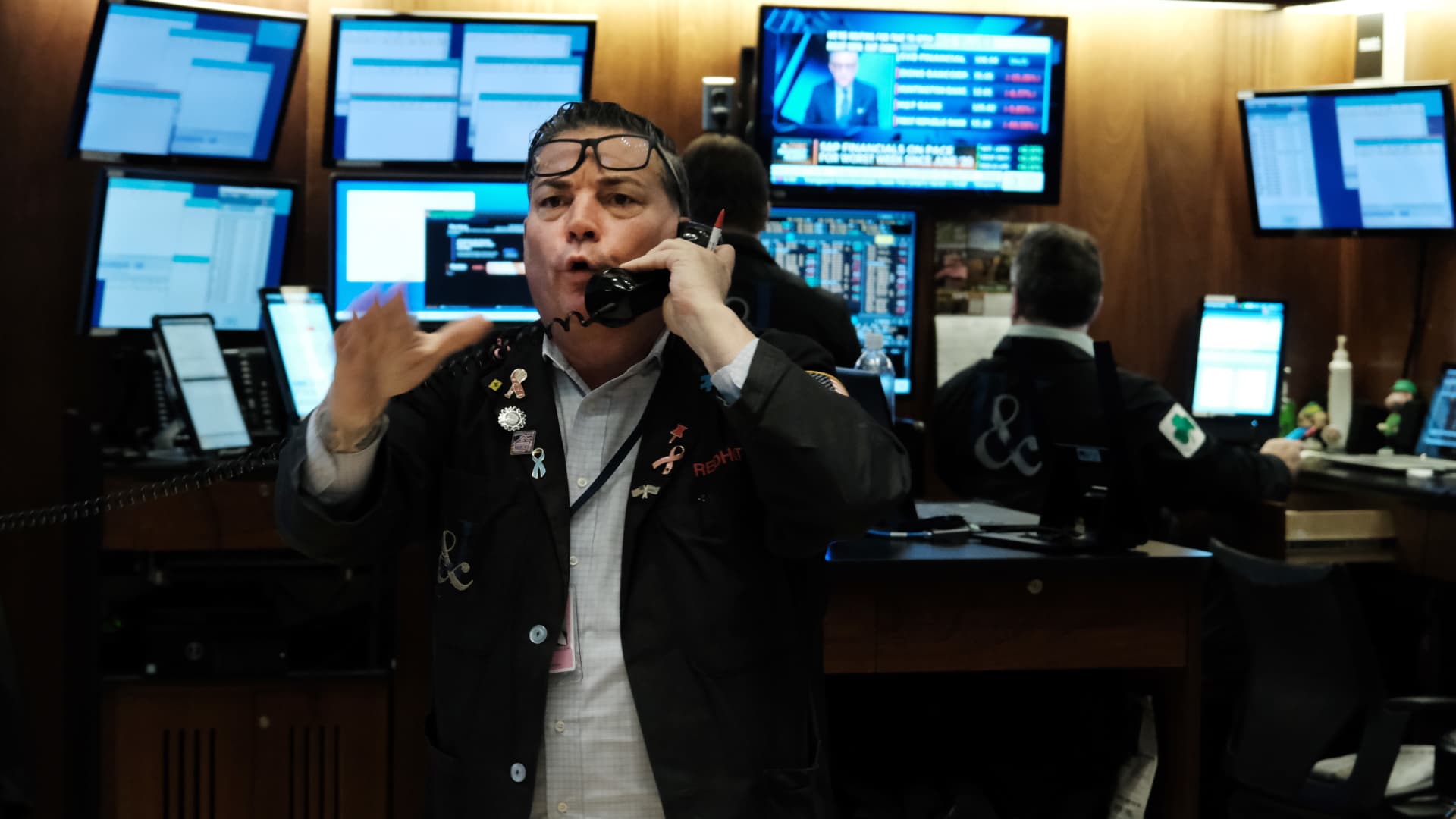It seemed like only yesterday that markets were sure that a tougher Federal Reserve was going to raise its benchmark interest rate a half percentage point at its meeting in less than two weeks.
That’s because it, in fact, was yesterday. On Thursday, traders in the futures market were almost certain the Fed would take a more hawkish monetary policy stance and double up on the quarter-point hike it approved last month.
But one bank implosion and a cooperative jobs report later, and the market has changed its mind.
The probability of a 0.25 percentage point increase rose above 70% at one point in morning trading, according to the CME Group, indicating that a momentary bout of Fed-induced panic had passed.
“In all, the data do not argue for a 50 [basis point] rate hike by the Fed on March 22 despite the strong payroll advance,” said Kathy Bostjancic, chief economist at Nationwide.
Nonfarm payrolls increased by 311,000 in February, well ahead of the Wall Street estimate for 225,000 but still a step down from January’s 504,000.
Perhaps more important, average hourly earnings rose just 0.24% for the month, a 4.6% year-over-year gain that was below the 4.8% estimate. That’s a critical metric for the inflation-fighting Fed that no doubt eyed Friday’s Labor Department report as closely as it will be watching next week for consumer and producer prices in February.
“The Fed can take comfort in the rise in the supply of labor and the easing of upward pressure on wages to maintain a 25 [basis point] rate increase,” Bostjancic added. A basis point is 0.01 percentage point.
Economists at both Bank of America and Goldman Sachs concurred, saying Friday morning that they are standing behind their forecasts for a quarter-point hike at the March 21-22 meeting of the Federal Open Market Committee. Both banks used the phrase “close call” on their outlooks, noting that the upcoming week of data will play a big role in the final Fed decision.
“The February report was overall on the softer side,” Michael Gapen, chief U.S. economist at Bank of America, said in a client note. “While payrolls topped our expectations, the rise in the unemployment rate and relatively weak average hourly earnings data point to a little better balance between labor supply and demand.”
What made the shift to 25 basis points notable was that at one point Thursday the outlook for a 50 basis point move was above 70%, as gauged by the CME’s FedWatch gauge of trading in federal funds futures contracts. That came following remarks from Fed Chairman Jerome Powell, who told Congress this week that if inflation data didn’t ease, the central bank likely would push rates faster and higher than previously expected.
However, that pricing began to come in during a sharp slide in the stock market and fears that the collapse of Silicon Valley Bank could be indicative of contagion in the financial sector. The shift towards the quarter-point probability became more pronounced Friday morning, though trading was volatile and the half-point move was gaining more momentum.
“The move down on 50 basis point odds was hard to separate from the collapse of SVB,” said Liz Ann Sonders, chief investment strategist at Charles Schwab. “That has to be in the thinking of Fed: Is this the thing that’s breaking?”
